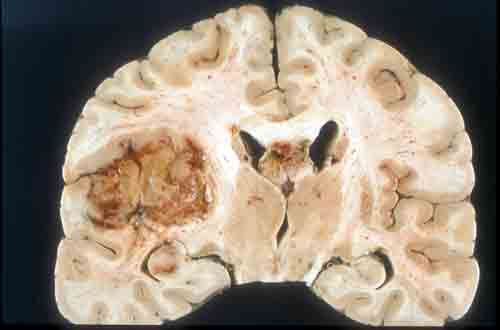A new study is giving researchers hope that novel targeted therapies can be developed for glioblastoma multiforme (GBM), the most common and most aggressive form of brain cancer, after demonstrating for the first time that a gene known as melanoma differentiation associated gene-9/syntenin (mda-9/syntenin) is a driving force behind the disease’s aggressive and invasive nature.
Recently published in the journal Neuro-Oncology, the study led by Virginia Commonwealth University Massey Cancer Center and VCU Institute of Molecular Medicine (VIMM) researchers used cell cultures and animal models to uncover the mechanisms by which mda-9/syntenin causes GBM to grow and invade normal brain tissue. Additionally, by using publicly available cancer genomic database information (bioinformatics) and analyzing tissue samples from patients with GBM, the researchers found that increased levels of mda-9/syntenin correlated with more advanced tumors and shorter survival. The study’s discoveries pinpoint molecular targets that could be used to develop new therapies, and also suggest that the gene could be used to help stage and monitor this aggressive disease.
“Our current study represents a major breakthrough in understanding what drives GBM, and it is a starting point for the development of future therapies,” says the study’s lead author Paul B. Fisher, M.Ph., Ph.D., Thelma Newmeyer Corman Endowed Chair in Cancer Research and co-leader of the Cancer Molecular Genetics research program at VCU Massey Cancer Center, chairman of the Department of Human and Molecular Genetics at VCU School of Medicine and director of the VIMM. “Because mda-9/syntenin is expressed more in advanced disease, we are also hopeful that we may be able to use the gene to monitor for disease progression and test whether certain therapies are working.”
Mda-9/syntenin was originally discovered by Fisher, and through bioinformatics he has found that the gene is overexpressed in a majority of cancers. He and his colleagues also found that mda-9/syntenin interacts with a predicted 151 cancer-related proteins through its PDZ domains, which are chains of amino acids that enable cell signaling by facilitating interactions between proteins.
In GBM, Fisher and his colleagues demonstrated that overexpression of mda-9/syntenin enhanced the cells’ ability to invade healthy tissue. In contrast, blocking expression of mda-9/syntenin in animal models reduced invasion, suppressed cell migration and caused tumors to shrink. Additionally, blocking the expression of mda-9/syntenin decreased the production and secretion of interleukin 8 (IL-8) proteins, which are signaling proteins that contribute to tumor growth and progression by promoting cell migration and the development of new blood vessels, a process known as angiogenesis.
“We are now focusing on developing small molecules, or drugs, that block the binding of specific cancer-promoting proteins that interact with mda-9/syntenin through its PDZ domains,” says Fisher. “If successful, these PDZ-targeted therapies could potentially lead to effective treatments for GBM.”
Adapted from a news release issued by Virginia Commonwealth University



